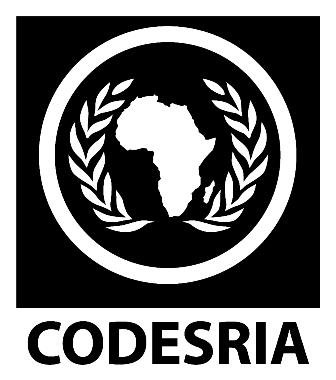An analysis of efficiency in the trucking industry in Tanzania
Keywords:
Freight, economic performance, trucks, industry, road transport, efficiency, TanzaniaSynopsis
The lacklustre performance of the distinctive trucking sector in Tanzania has
concerned policy makers and analysts preoccupied with finding and instituting
measures aimed at reinvigorating the economy, after years of suffering from the
severe economic crisis. It is acknowledged that the revival of the economy is very
much predicated on the proper functioning of the trucking sector; itself a victim of
the crisis.
Of greatest concern has been the operating environment, dictated in large part
by the regulatory framework (legislative and administrative) governing operations in
the sector, which has imposed attenuating circumstances to operational efficiency,
causing non-optimality in firm performance. The need to examine the structure of
the trucking industry and its effect on productive efficiency, productivity growth and
identification of the main determinants of performance, and to propose remedial
measures had become apparent. This forms the gist of this study.
A performance analysis is carried out, much more deeply for the public
subsector on account of data availability. The structure-conduct-performance (SCP)
paradigm is used to show how the current structure has evolved; the effect of
regulation on industry and fir:n performance is also examined. Cost and frontier
production functions' estimations are conducted to identify determinants of
performance, evaluate productive efficiency in relation to best practice technology
and show its pevelopment overtime.
Findings confirm the existence of inefficiencies and lack of productivity in
the industry. Substantial cost saving possibilities exist in terms of expansion, to
economic advantage, of the scale of trucking operations, improvement of capacity
utilisation and rationalisation 'Jf the use of resources in the production of trucking
services. Competitiveness requires institutionalisation of these cost saving measures.
Downloads
References
Afriat, S. ( 1972), Efficiency Estimates of the Production Functions, International
Economic Review 13, 568-598.
Aigner and Chu ( 1968), On Estimating the Industry Production Function, American
Economic Review 58, No. 4, 826-39.
Alokan, 0.0. ( 1995), The Road Freight Industry in Nigeria: New Challenges in an Era ·
of Structural Adjustment, Transport Reviews, Vol. 15, No. 1, 27-41.
Amani, H.K.R., S.E. Hagen, B.J. Ndulu, and K. Stenberg (1987), A Regional and InterRegional
Study of Tanzania Part 1, Economic Research Bureau Monograph Series 8-1,
Economic Research Bureau, University of Dares Salaam.
Anderson, S.C. (1983), The Effect of Government Ownership and Subsidy on
Performance: Evidence from the Bus Transit Industry, Transportation Research A Vol.
A, No. 3, 191-200.
Atkinson, S.E. and C. Cornwell (1994), Estimation of Output and Input Efficiency Using
a Flexible Functional Form and Panel Data, International Economic Review, Vol. 35,
No. 1, 245-55.
Bagachwa, M.S.D. ( 1981 ), Idle Capacity in the Truck Industry: A Case of Biashara
TransportCompany(BITCO),JournalofEconomicRef'-ections, Vol. l No. 1, 10-18.
Bailey, E.E. and Friedlaender, A.F. (1982), Market Structure and Multiproduct
Industries, Journal of Economic Literature 20, 1024-1048.
Barros, P.P. (1995), Conduct Effects of Gradual Entry Liberalisation m Insurance,
.Journal of Regulato,y Economics, 8, 45-60.
Bauer, P. W. (1990), Recent Developments in the Econometric Estimation of Frontiers,
Journal o.fEconometrics 46, 39-56.
Bayliss, B. (1992), Transport Policy and Planning: An Integrated Approach, Economic· ,
Development Institute Technical Materials, World Bank, Washington.
Beenhakker, H.L. and N. Bruzelius (1985), Transport and Marketing of Agricultural
Products in Tanzania, Unpublished Report, Dar es Salaam.






